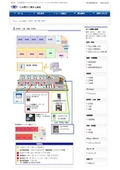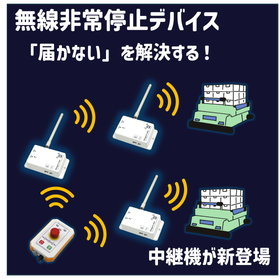Case Study 11 of Electric Lock Control by Scene: Research Institute, Factory, Warehouse / Research Institute
The research institute needs access control for entry and exit management aimed at security, as well as for managing confidential documents!
Access to and from the research institute is managed using multi-readers equipped with contactless card readers and keypads, as well as advanced security blood flow authentication devices. Entry and exit histories are accumulated and stored on a computer linked to the office's electric lock control panel. Employees and authorized personnel can enter the facility using a card key or a PIN. If a card key is used, it cannot be duplicated, and in case of loss, the registration can simply be canceled. Regular changes to the PIN can also ensure ongoing security. Access to each research and laboratory room is granted via contactless cards. Visitors can be verified through a camera-equipped intercom at the entrance, and the automatic door can be unlocked remotely. If there are inner rooms designed with dust and hygiene considerations, a system can be implemented where the door facing the hallway cannot open unless the inner door is closed, and vice versa, the inner door cannot open unless the hallway door is closed. The doors facing the hallways of each research and laboratory room are locked, and when the last employee locks the door facing outside, an announcement stating "This is the last person leaving" is made, after which the motion sensor in the security-enhanced area is activated. For more details, please contact us or refer to the catalog.
Inquire About This Product
basic information
【Features】 ○ Entry and exit to and from the research institute is managed by a multi-reader that combines a non-contact card reader and a keypad, as well as an advanced security blood flow authentication device. ○ Entry and exit history is accumulated and stored using a computer linked to the office's electric lock control panel. ○ Employees and authorized individuals can enter the premises using a card key or a PIN. ○ Card keys cannot be duplicated, and in the event of a lost card, only the registration can be canceled. ○ If the PIN is changed regularly, security can be maintained at all times. ○ Entry to research and experimental rooms is done with a non-contact card. ○ Visitors can be verified using the camera-equipped intercom at the entrance. → Remote operation allows for the automatic unlocking of the door. ○ If there is a dust-proof and hygienic inner room in the laboratory or experimental room, an interlock function prevents the door facing the corridor from opening unless the inner door is closed. → A system is also possible where the inner room door cannot open unless the door on the corridor side is closed. ○ The doors facing the corridor of each research and experimental room are locked, and when the last employee locks the door facing the outside, an announcement is made stating, "This is the last person leaving," after which the motion sensor in the security-enhanced area is activated. ● For more details, please contact us or refer to the catalog.
Price information
Please contact us.
Delivery Time
※Please contact us.
Applications/Examples of results
For more details, please contact us or refer to the catalog.
catalog(1)
Download All CatalogsCompany information
Protecting lives, pioneering technology - JEI Pioneer of electric locks and security devices JEI (Japan Electronic Industry) was established in 1962 as Japan's first domestic electric lock manufacturer. For over half a century, we have chronicled the history of disaster prevention and crime prevention devices and access control systems in Japan, based on the philosophy of respecting human life. The electric lock "Free Lock" has been certified for disaster prevention performance by the former Ministry of Construction [(Public Interest Incorporated Foundation) Japan Architecture Center]. The electric lock control panel CB series is compatible with most electric locks from various manufacturers. Equipped with disaster prevention and crime prevention functions, we play a crucial role in access control management in various scenarios through optimal control of various security terminal devices.







![[Case Study of Omakase Save-Air - Ito Electric] Air Conditioning Energy Saving Control](https://image.mono.ipros.com/public/product/image/2bd/2000873114/IPROS15104199188971493037.jpg?w=280&h=280)
![[For the pharmaceutical manufacturing industry] Digitizing entry management in oxygen-deficient hazardous work.](https://image.mono.ipros.com/public/product/image/20a/2001525768/IPROS14827379347403299223.jpg?w=280&h=280)
![[For the food manufacturing and beverage manufacturing industry] Digitizing the management of oxygen deficiency hazard work in tank entry.](https://image.mono.ipros.com/public/product/image/bf8/2001525769/IPROS12773363766147418267.jpg?w=280&h=280)


